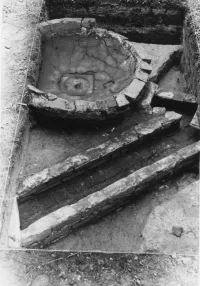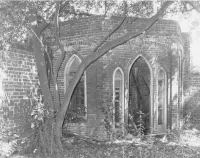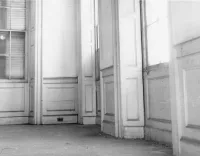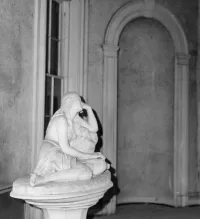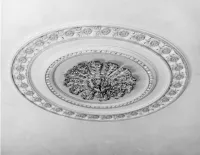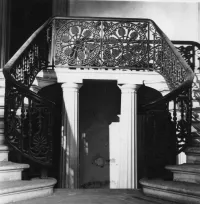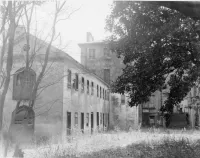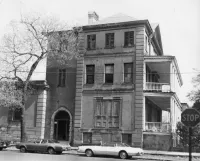Share what you know,
and discover more.
Share what you know,
and discover more.
May 16, 1977
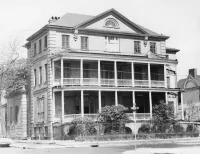
-

- Charmaine Bantugan
National Register of Historic Places - Sovernor William Aiken / Robinson-Aiken House
Statement of Significance: The Governor William Aiken House is significant both in terms of its architecture and its history. Architecturally, it chronicles various changes in design which occurred during the first half of the 19th Century. Historically, it deserves recognition as having been owned by both William Aiken, Senior and Junior two leading South Carolinians. The structure was built ca. 1820 by John Robinson, a merchant. In 1825, Robinson advertised that the mansion was for sale, and in 1827 William Aiken, Sr., acquired it. Aiken was president of the South Carolina Canal and Railroad Company and was a member of the South Carolina House of Representatives from 1824 until his death in 1831. After his father's death, William Aiken, Junior, (1806-1887) acquired the property. A rice planter, Aiken served in the South Carolina House of Representatives (1838-1841), as well as in the South Carolina Senate (1842-1844). From 1844 to 1846 he served as Governor of the State of South Carolina, and he later served three terms in the United States House of Representatives (1851-1857). Aiken was one of the original trustees of Peabody Educational Fund and was also an art collector. (In 1858 he added a wing to his house to display his collection, much of which is still intact and will be returned to the house once it is restored.) Aiken died in 1887. The house remained in the possession of his descendants until the 1970s. It is now owned by the Charleston Museum which plans to restore it as part of the museum complexes. Architecture; The Aiken House exemplifies the changes which occurred in architectural design during the first half of the 19th Century. The upper floors reflect the refined qualities (in both woodwork and proportion) of the late Federal period. The main floor exemplifies the height of Greek Revival design, while the art gallery (added in 1858) indicates the movement into the Victorian period. According to An Architectural Guide to Charleston by Albert Simons and W. H. Johnson Thomas, the Aiken House was "the most imposing residence of its period.
National Register of Historic Places - Sovernor William Aiken / Robinson-Aiken House
Statement of Significance: The Governor William Aiken House is significant both in terms of its architecture and its history. Architecturally, it chronicles various changes in design which occurred during the first half of the 19th Century. Historically, it deserves recognition as having been owned by both William Aiken, Senior and Junior two leading South Carolinians. The structure was built ca. 1820 by John Robinson, a merchant. In 1825, Robinson advertised that the mansion was for sale, and in 1827 William Aiken, Sr., acquired it. Aiken was president of the South Carolina Canal and Railroad Company and was a member of the South Carolina House of Representatives from 1824 until his death in 1831. After his father's death, William Aiken, Junior, (1806-1887) acquired the property. A rice planter, Aiken served in the South Carolina House of Representatives (1838-1841), as well as in the South Carolina Senate (1842-1844). From 1844 to 1846 he served as Governor of the State of South Carolina, and he later served three terms in the United States House of Representatives (1851-1857). Aiken was one of the original trustees of Peabody Educational Fund and was also an art collector. (In 1858 he added a wing to his house to display his collection, much of which is still intact and will be returned to the house once it is restored.) Aiken died in 1887. The house remained in the possession of his descendants until the 1970s. It is now owned by the Charleston Museum which plans to restore it as part of the museum complexes. Architecture; The Aiken House exemplifies the changes which occurred in architectural design during the first half of the 19th Century. The upper floors reflect the refined qualities (in both woodwork and proportion) of the late Federal period. The main floor exemplifies the height of Greek Revival design, while the art gallery (added in 1858) indicates the movement into the Victorian period. According to An Architectural Guide to Charleston by Albert Simons and W. H. Johnson Thomas, the Aiken House was "the most imposing residence of its period.
May 16, 1977
National Register of Historic Places - Sovernor William Aiken / Robinson-Aiken House
Statement of Significance:The Governor William Aiken House is significant both in terms of its architecture and its history. Architecturally, it chronicles various changes in design which occurred during the first half of the 19th Century. Historically, it deserves recognition as having been owned by both William Aiken, Senior and Junior two leading South Carolinians.
The structure was built ca. 1820 by John Robinson, a merchant. In 1825, Robinson advertised that the mansion was for sale, and in 1827 William Aiken, Sr., acquired it. Aiken was president of the South Carolina Canal and Railroad Company and was a member of the South Carolina House of Representatives from 1824 until his death in 1831.
After his father's death, William Aiken, Junior, (1806-1887) acquired the property.
A rice planter, Aiken served in the South Carolina House of Representatives (1838-1841), as well as in the South Carolina Senate (1842-1844). From 1844 to 1846 he served as Governor of the State of South Carolina, and he later served three terms in the United States House of Representatives (1851-1857).
Aiken was one of the original trustees of Peabody Educational Fund and was also an art collector. (In 1858 he added a wing to his house to display his collection, much of which is still intact and will be returned to the house once it is restored.)
Aiken died in 1887. The house remained in the possession of his descendants until the 1970s. It is now owned by the Charleston Museum which plans to restore it as part of the museum complexes.
Architecture; The Aiken House exemplifies the changes which occurred in architectural design during the first half of the 19th Century. The upper floors reflect the refined qualities (in both woodwork and proportion) of the late Federal period. The main floor exemplifies the height of Greek Revival design, while the art gallery (added in 1858) indicates the movement into the Victorian period. According to An Architectural Guide to Charleston by Albert Simons and W. H. Johnson Thomas, the Aiken House was "the most imposing residence of its period.
Posted Date
Jun 08, 2023
Historical Record Date
May 16, 1977
Source Name
National Register of Historic Places
Source Website
Delete Story
Are you sure you want to delete this story?
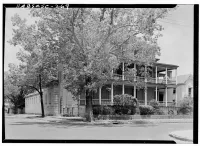
-

- Marley Zielike
Robinson-Aiken House, 48 Elizabeth St Charleston, Charleston County, SC
An unusually complete surviving example of a fine ante bellum planter`s town house group, once the home of Governor William Aiken. The house was built by prominent Charleston merchant John Robinson, circa 1820. William Aiken, Sr., another wealthy Charleston merchant, purchased the house in 1826. William Aiken Jr., who would subsequently serve as Governor of South Carolina (1844-46), inherited the property from his father in 1833. Together with his wife Harriet Lowndes Aiken, he undertook a substantial renovation of the house. The principal entrance was moved around the corner from Judith Street to Elizabeth Street, and the original first floor arrangement of an entrance passage flanked by symmetrical parlors was reconfigured into two larger parlors separated by a partition with pocket doors. The two new parlor rooms were redecorated in a robust version of the then-popular Greek Revival style. At an unknown date later in the 19th century, the parlor fireplaces were altered to accommodate the burning of coal.
Robinson-Aiken House, 48 Elizabeth St Charleston, Charleston County, SC
An unusually complete surviving example of a fine ante bellum planter`s town house group, once the home of Governor William Aiken. The house was built by prominent Charleston merchant John Robinson, circa 1820. William Aiken, Sr., another wealthy Charleston merchant, purchased the house in 1826. William Aiken Jr., who would subsequently serve as Governor of South Carolina (1844-46), inherited the property from his father in 1833. Together with his wife Harriet Lowndes Aiken, he undertook a substantial renovation of the house. The principal entrance was moved around the corner from Judith Street to Elizabeth Street, and the original first floor arrangement of an entrance passage flanked by symmetrical parlors was reconfigured into two larger parlors separated by a partition with pocket doors. The two new parlor rooms were redecorated in a robust version of the then-popular Greek Revival style. At an unknown date later in the 19th century, the parlor fireplaces were altered to accommodate the burning of coal.
Robinson-Aiken House, 48 Elizabeth St Charleston, Charleston County, SC
An unusually complete surviving example of a fine ante bellum planter`s town house group, once the home of Governor William Aiken.The house was built by prominent Charleston merchant John Robinson, circa 1820. William Aiken, Sr., another wealthy Charleston merchant, purchased the house in 1826. William Aiken Jr., who would subsequently serve as Governor of South Carolina (1844-46), inherited the property from his father in 1833. Together with his wife Harriet Lowndes Aiken, he undertook a substantial renovation of the house. The principal entrance was moved around the corner from Judith Street to Elizabeth Street, and the original first floor arrangement of an entrance passage flanked by symmetrical parlors was reconfigured into two larger parlors separated by a partition with pocket doors. The two new parlor rooms were redecorated in a robust version of the then-popular Greek Revival style. At an unknown date later in the 19th century, the parlor fireplaces were altered to accommodate the burning of coal.
Posted Date
Sep 27, 2021
Source Name
Library of Congress
Source Website
Delete Story
Are you sure you want to delete this story?
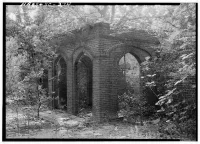
Robinson-Aiken Cow House, 48 Elizabeth St Charleston, Charleston County, SC
A rare example of its type with notable architectural character.
Robinson-Aiken Cow House, 48 Elizabeth St Charleston, Charleston County, SC
A rare example of its type with notable architectural character.Posted Date
Sep 27, 2021
Source Name
Library of Congress
Source Website
Delete Story
Are you sure you want to delete this story?
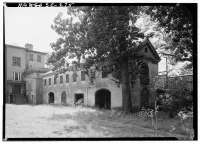
Robinson-Aiken Service Building & Stable, 48 Elizabeth St Charleston, Charleston County, SC
A rare example of its type with notable architectural character.
Robinson-Aiken Service Building & Stable, 48 Elizabeth St Charleston, Charleston County, SC
A rare example of its type with notable architectural character.Posted Date
Sep 27, 2021
Source Name
Library of Congress
Source Website
Delete Story
Are you sure you want to delete this story?
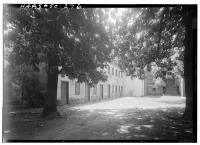
Robinson-Aiken Slave Building & Kitchens, 48 Elizabeth St Charleston, Charleston County, SC
A rare example of its type with notable architectural character.
Robinson-Aiken Slave Building & Kitchens, 48 Elizabeth St Charleston, Charleston County, SC
A rare example of its type with notable architectural character.Posted Date
Sep 27, 2021
Source Name
Library of Congress
Source Website
Delete Story
Are you sure you want to delete this story?
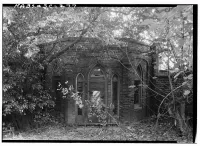
Robinson-Aiken Necessary Building, 48 Elizabeth St Charleston, Charleston County, SC
A rare example of its type with notable architectural character.
Robinson-Aiken Necessary Building, 48 Elizabeth St Charleston, Charleston County, SC
A rare example of its type with notable architectural character.Posted Date
Sep 27, 2021
Source Name
Library of Congress
Source Website
Delete Story
Are you sure you want to delete this story?


